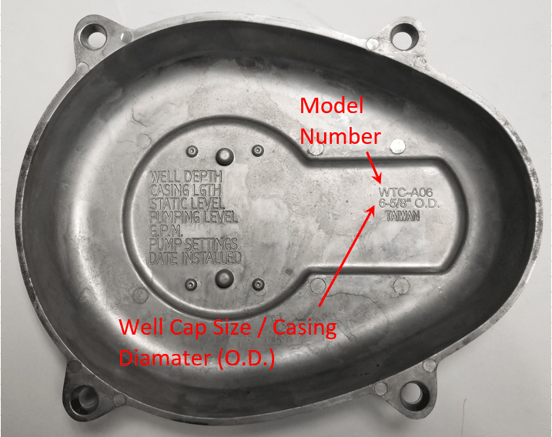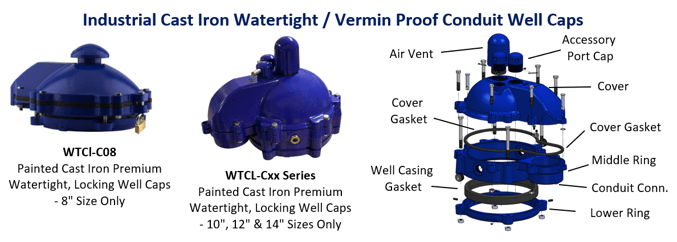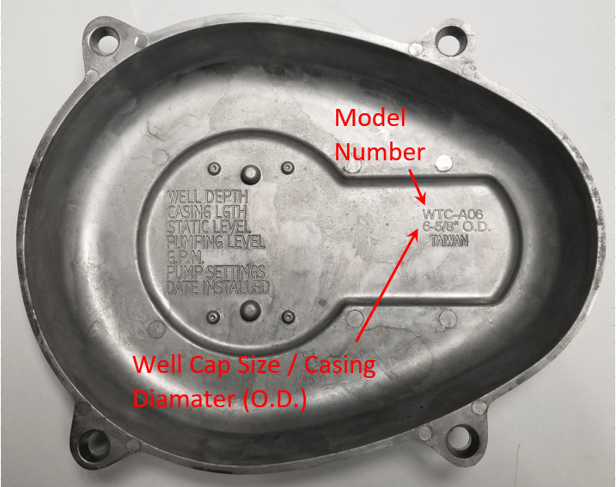How do I identify a well cap model number for replacement parts?
Well Cap Identification for Replacement Parts
#1 - Identify the brand. Well caps manufactured by Boshart Industries "BOSHART" logo molded on the cover.

#2 - Determine the material. Well caps are manufactured from both aluminum, plastic, and cast iron.
#3 - Determine the well cap model number. The model number may be molded inside the cover (see photo below).

Plain and conduit well caps do not have O-Rings that seal the well cap to the well casing, nor do they have screened air vents. These types of caps are not rated as watertight or vermin proof. Check the well construction codes in your area, there have been changes in many codes that would now require the use of a watertight and vermin proof well cap. We would suggest that this upgrade be made regardless of the well codes to provide a more sanitary well cover.

WTC and WTMLC well caps have a double O-ring seal system. One O-ring seals the lower ring of the well cap to the well casing and a second O-ring seals the top cover to the lower ring. These well caps exceed the requirements of the ASSE Standard #1093-2019 (WSC Standard PAS-97 (2019) Performance Requirements for Pitless Adapters, Pitless Units, and Well Caps).
WTCC well caps have a single heavy-duty gasket seal which seals both the lower ring of the well cap to the well casing and the top cover to the lower ring. These well caps exceed the requirements of the ASSE Standard #1093-2019 (WSC Standard PAS-97 (2019) Performance Requirements for Pitless Adapters, Pitless Units, and Well Caps).

WTCL well caps have two heavy duty gasket seals. One gasket seals the lower and middle ring assembly of the well cap to the well casing and a second gasket seals the top cover to the lower well cap assembly. These well caps exceed the requirements of the ASSE Standard #1093-2019 (WSC Standard PAS-97 (2019) Performance Requirements for Pitless Adapters, Pitless Units, and Well Caps).
#4 - Determine the Well cap and well casing size. The well caps are sized according to the outside diameter (O.D.) of the well casing. Again, it may be molded inside the cover (see photo below).

TIP - For quick identification, photos of required replacement parts will speed up the process and eliminate errors due to miscommunication of descriptions. Photos of the marking on the outside of the cover as well as the markings on the inside of the cover will assist in getting the right parts.
